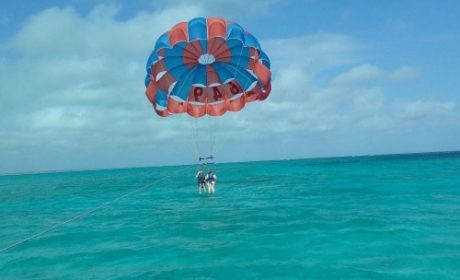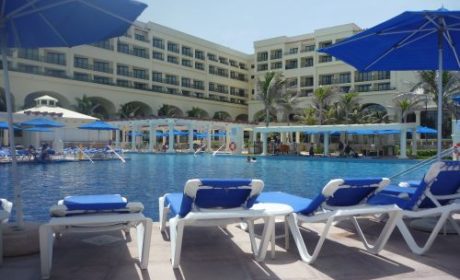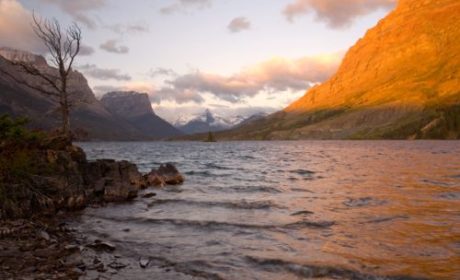When My Itchy Travel Feet featured writer, Debi Lander from ByLanderSea, isn’t roaming through the rolling green hills of beautiful Scotland, she’s busy basking in the warm Aruba sun. Located south of the Hurricane Belt, the Caribbean island is luckier than most during hurricane season.
If you’re curious about exploring Aruba, be sure to follow Debi’s tips.
Gorgeous high-rise resorts along Aruba’s southern coast and white sand beaches lure lots of visitors to the island. Like them, I savored the luxurious pools and cabanas at the Aruba Marriott in the area called Palm Beach.
Guests at these resorts won’t need a car, but having one to drive around let me explore, and dine like the locals. I ate at restaurants you’d likely never see or choose unless you had the inside scoop.
Table of Contents
Where is Aruba?

Aruba spans just 19.6 miles long and six miles across. It lies fifteen miles north of Venezuela. The island’s tropical waters of the southern Caribbean fall just south of the hurricane belt.
Aruba’s location means the weather is good most of the year. Surprisingly, the climate is dry, diminishing the threat of plan-disrupting storms.
Aruba’s history

Spaniards discovered the isle in 1499, but the Dutch acquired Aruba in 1636. After beginning efforts to become independent, Aruba decided in 1990 to remain part of the Kingdom of the Netherlands. Dutch customs continue to shape much of the island’s heritage with Dutch as the official language.
You’ll also hear English and Spanish, and Papiamento, the local language that mixes Dutch, Portuguese, Spanish, French, English and African dialects. Visitors can use American dollars, but change comes in the official currency, the Aruban florin.
Fun things to do in Aruba

Of course, tourists come to play and relax in paradise and the resort pools, beaches, spas, and casinos don’t disappoint. Water sports like boating, sailing, windsurfing, paddle boarding, diving and fishing offer great diversions as well.
But, take time for exploring Aruba. A tour to the north side requires a 4-wheel drive vehicle, so I’d recommend hiring a local guide or joining a tour group. You’ll get the bonus of a local perspective. (Book ahead at Viator.)
Refreshingly, the northeast coast or windward side of Aruba bears little resemblance to the resort area. You might even question if you’re in the American Southwest or still in the Caribbean.
Boomer Travel Tip
MedjetAssist Members who are hospitalized 150 miles from home receive medical transport to a home-country hospital of choice. Memberships from $99.
Exploring Aruba by ATV

Jeep or ATV tours (book here) along the northerly coast ramble through arid hills, immense cactus fields and offer some of Aruba’s most striking views. Mother Nature shows off her power with thunderous crashing waves and her softer touch in dreamy receding water trails against the rocky shoreline. You’ll find the residents also enjoying outings along this memorable stretch of beach.

Tour vehicles continue bumping along the rutty coastal road passing a magnificent golf course and onto the rugged shores. Tiny fishing shacks scatter near the seacoast. Not much to look, they add a feel of authenticity.
Building rock cairns, miniature wishing rock piles, has transformed from a popular activity to a taboo, as part of efforts to preserve the ecology and landscape.
Visit a lighthouse

Tour groups usually stop amid the sand dunes by the California Lighthouse. Renovated in 2016 for its 100th birthday, the charming white lighthouse beckons climbers to its crown. A nearby, but touristic restaurant, La Trattoria el Faro Blanco (English: The White Lighthouse Restaurant), makes an ideal spot for a romantic dinner or sunset cocktail.
Take in a sunrise or sunset at Chapel of Alto Vista

The Chapel of Alto Vista, meaning, highest view, stands as one of Aruba’s most precious landmarks. The little stucco building became the island’s first Roman Catholic Church in 1750 and was reconstructed in 1953.
Its high elevation and location make it ideal for watching sunrise and sunset, directly from the churchyard. Arubans consider the chapel a special place for peace and contemplation.
Find Gold mines and a collapsed natural bridge
The stone ruins of the old Bushiribana gold mines bring life to Aruba’s past. Gold was discovered in 1824. The next year saw a gold rush and a smelting plant built to extract the metal from ore mined in the nearby hills.
The salty air caused mechanical problems and mining ceased after ten years. Climbing on the ruins brings some outstanding photo opportunities.
Most tours drive on to the once famous, coral limestone Natural Bridge that sadly collapsed in 2005. Parts of the natural wonder remain and the views are photo worthy. You’ll be asked to pay $1 to use the toilet, but it is one of the nicest I’ve ever seen in similar circumstances (even before considering how rare one finds them on this side of the island.)
Explore Arikok National Park

Arikok National Park, a desert-like nature preserve, protects the unique features of Aruba’s geography. Once you’re within the Park, notice how the landscape changes from hills with cacti to stone walls and limestone bluffs.
Swim in Aruba’s Natural Pool
A drive to Aruba’s Natural Pool ranks as an unforgettable adventure even though you are simply a passenger. The driver maneuvers off road over stretches of some of the ruttiest and rockiest pathways imaginable, I hesitate even to call them roads.
Hold on tight for a spine jolting descent. (FYI – Don’t take this tour if you have back issues or joint problems.)

Eventually, you arrive at an overlook, a terrific picture moment if you happen to be with what Arubans call your dushi or sweetheart. (The pronunciation always leads to some laughs.) Summon courage to climb down 80-plus steps at various heights and spacing to the shoreline.

The Natural Pool or conchi rests within a unique lava rock formation protecting the swimming area from the rough sea. The small pool entices, and a dip makes the excursion worth the time and energy involved.
Be extra cautious of sharp, slippery rocks; wear water shoes if you have them. Don’t leave any belongings behind, as I did, or you’ll have to mount the literally breathtaking staircase twice.
Taste the Aloe

A visit to the Aruba Aloe Museum and Factory in Hato may surprise you. You’ll see fields of aloe and learn how it is ‘fileted’ or cut and processed into gels and lotions.
You can even give it a taste. Aloe became Aruba’s first cash crop and continues to be a major export and cosmetics power.
Boomer Travel Tip
Need to pack for a tropical getaway? Check out our tropical gear tips.
Where to eat in Aruba
Breakfast: Linda’s Dutch Pancake House

With Dutch customs shaping much of the island’s culinary heritage, it’s no surprise that Linda’s Dutch Pancake House specializes in Dutch pancakes. The huge but thin cakes arrive tableside almost the size of a pizza. Roll it up and top with a bit of Schenstroop, 100% beet sugar syrup.
Lunch: Zeerover

Zeerover, meaning buccaneer in Dutch, springs up along the road, as a no-frills shack, flying a pirate flag. The simple fish-fry restaurant hovers at the edge of a pier. The magnificent view of sparkling turquoise water cinches the reason to come.
Place an order from a hanging menu board featuring fish, fresh from the ocean. The catch of the day might include wahoo, snapper, barracuda, kingfish, or shrimp.
Side dishes include fries, plantains, onions in vinegar (pika), and pan bati (Aruban cornbread). That’s it, but you won’t be disappointed.
Add a beer, perhaps a Balashi, an Aruban favorite. Food orders come to the picnic table in baskets.
Humble Zeerover absolutely defines Aruba; enjoy the ambiance and the fish.
Drinks: Charlie’s Restaurant and Bar

You’ll find Charlie’s restaurant and bar in the San Nicolas area of the island—an area increasingly becoming an art district. Strolling around will lead you to 10 or 12 stunning murals painted by local and international artists. A new Museum of Industry, an arts center, and a shop selling handmade crafts are open and drawing customers.
Charlie’s sits on the same corner it has occupied for over 55 years. Pennants, logos, art, knick-knacks, and well, you name it; adorn the overly crammed ceiling and walls. One could linger for hours without seeing everything.
Third generation owner Charlie, a most likable guy, deserves the moniker of “chef.” He personally prepares the dishes on the menu.
In season seafood reigns as the daily special. Go at lunchtime or late afternoon and have an entertaining time, likely with live music.
Dinner: West Deck

You’ll find Governors Bay not far from the cruise ship harbor. I suggest West Deck, a casual island grill, and lively beach bar atop a large wooden deck.
Tangy beer margaritas come in a square glass container with a bottle of Chill beer turned upside down. Every once in a while, you lightly lift the beer bottle and let some of the suds into your drink.
West Deck features small plates or tapas ideal for sharing. Order a variety and pass them around.
Don’t miss the spicy shrimp and seafood ceviche, chicken satay, tenderloin and plantain skewers, or the local favorite, Kenshi Yena, a thick chicken stew with prunes, local spices, and cashews, comes covered with Gouda cheese.
I can’t offer any tips on nightlife, as I’m not a night owl. I understand Aruba offers many after hours options, including casinos.
If you are lucky enough to visit Aruba, nicknamed One Happy Island, I’ll bet you leave one happy traveler. US citizens clear U.S. immigration and customs in Aruba, making for a happier return stateside as well.
More boomer fun in the Caribbean
Looking for more to do in the Caribbean? Read about:



